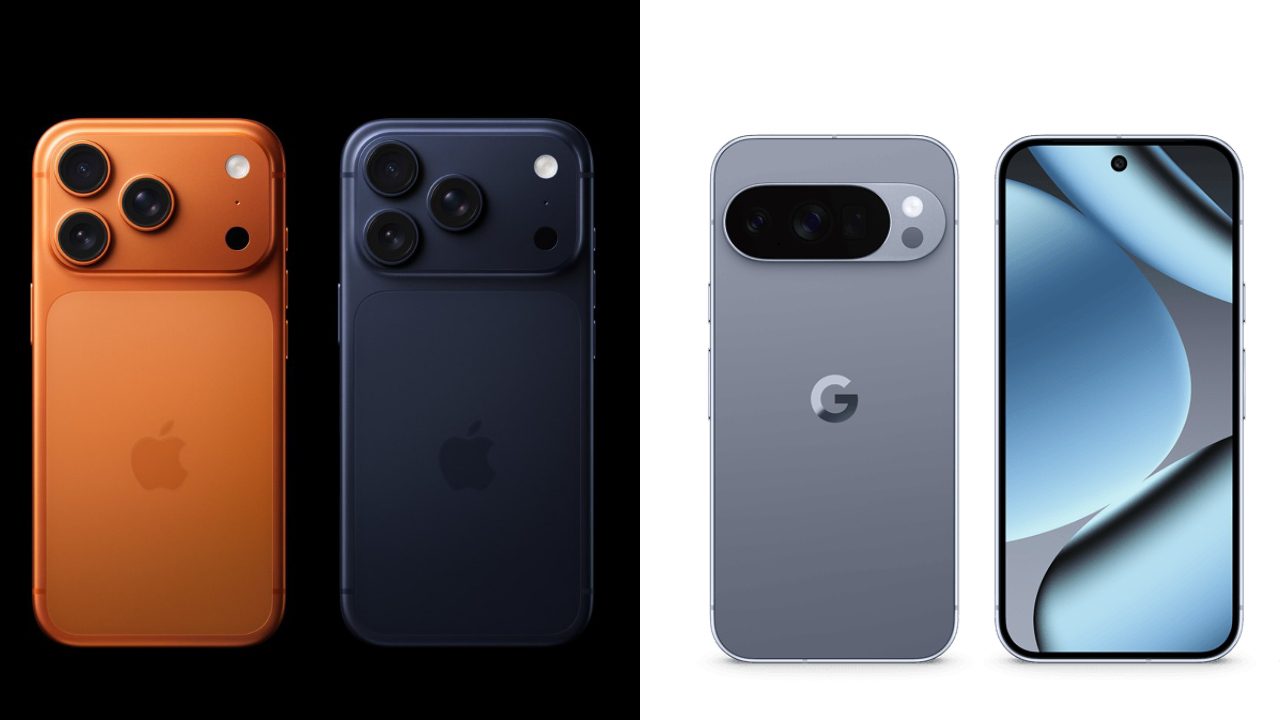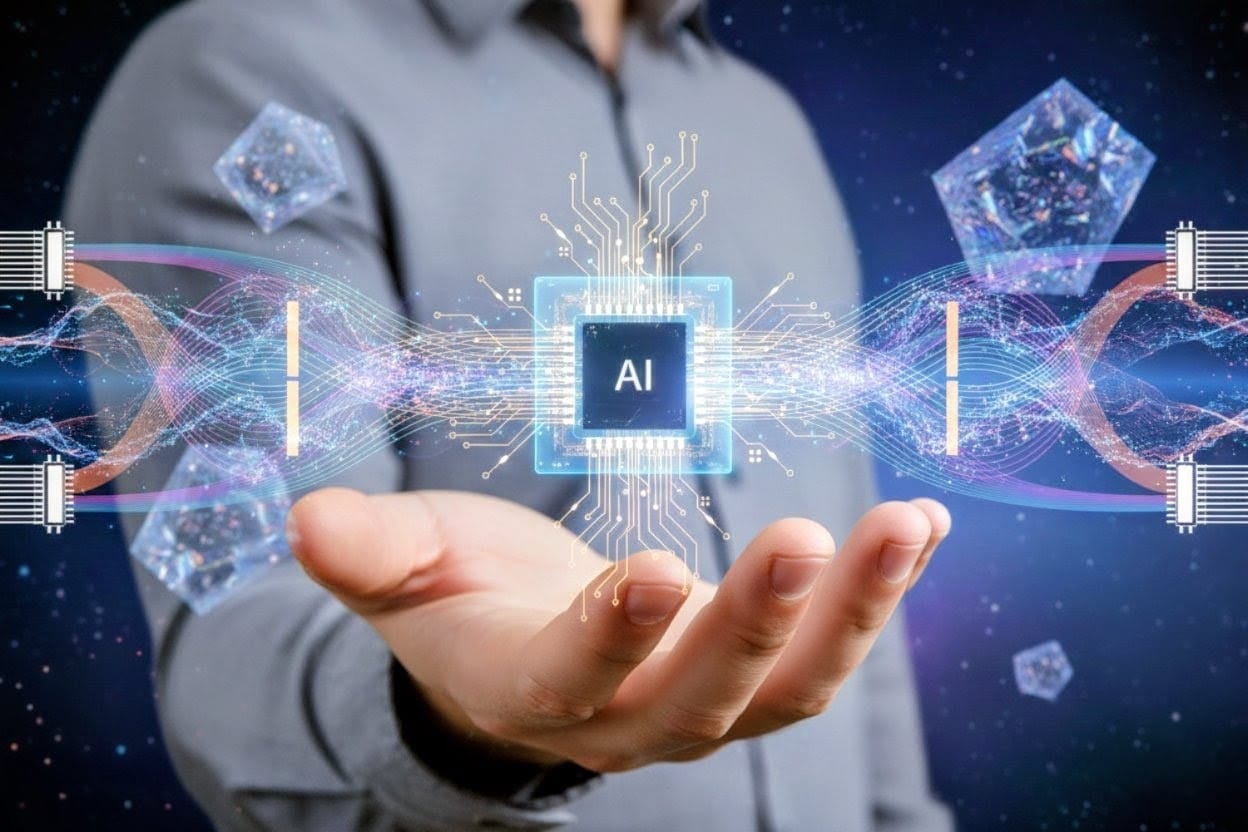In 2025, the flagship war continues between Apple’s iPhone and Google’s Pixel series. With the recent launch of the iPhone 17 family and Google’s Pixel 10 line, consumers have two powerful ecosystems to choose from. In this comparison blog, we’ll dive into design, performance, camera capabilities, software experience, battery life, ecosystem, and value to help you decide which smartphone set suits you best.
Design & Build Quality
Apple’s 2025 iPhone lineup includes the new iPhone 17, iPhone 17 Pro / Pro Max, and a brand-new iPhone Air. Apple highlights that the iPhone Air is the thinnest iPhone ever at just 5.6 mm thickness, built with a titanium frame and a mirrored finish. (Apple) The Pro models feature vapor-chamber cooling, a horizontal “camera plateau” design, and upgraded materials for thermal and structural stability. All models now include Ceramic Shield 2 front (for better scratch resistance) and improved durability.
In contrast, Google’s Pixel 10 series (including Pixel 10, Pixel 10 Pro, and Pixel 10 Pro Fold) presents a refreshed aesthetic, with recycled materials, and a sleek unobtrusive style. (blog.google) The displays are protected by Gorilla Glass Victus 2. The foldable Pixel 10 Pro Fold is especially notable as one of the most durable foldables, with full dust and water resistance claimed by Google.
In summary, if ultra-thin premium design and a refined build are your priority, the iPhone Air impresses. For more conventional designs, Pixel 10 offers a clean, modern look—and the foldable gives a unique alternative.
Display & Visual Experience
All of Apple’s 2025 iPhones now support ProMotion 120 Hz adaptive refresh rate, making animations smoother across models. The standard iPhone 17 features a 6.3″ Super Retina XDR OLED display with peak outdoor brightness around 3,000 nits. The Pro variants offer sustained performance improvements and better thermal management to maintain display quality under load.
On the Pixel side, the Pixel 10 has a 6.3″ OLED “Actua” display (1080×2424, 422 ppi) with smooth refresh (60–120 Hz) and peak brightness up to 3,000 nits. The Pixel 10 Pro variants step up to “Super Actua” LTPO panels with better color depth and possibly higher refresh consistency. The foldable Pixel’s inner display offers a more expansive canvas, though with some trade-offs in crease visibility and thickness.
Thus, both ecosystems now support high refresh rates and bright displays. iPhones may have the edge in color accuracy and calibration out of the box, while Pixel displays promise flexibility (especially in foldables).
Performance & Chipsets
Apple continues its custom silicon strategy. The 2025 iPhones are powered by the A19 / A19 Pro chip, offering improved CPU, GPU, and neural processing performance. Apple claims up to 40 % better sustained GPU/CPU performance in the Pro models thanks to the new thermal design. Additionally, the Pro models integrate Neural Accelerators into GPU cores for faster machine learning workflows.
Google’s 2025 Pixel series brings the Tensor G5 chip, now fabricated on a 3 nm process (by TSMC instead of Samsung), which helps with power efficiency. The architecture includes a Cortex-X4 primary core, five high-power A725 cores, and two energy-efficient cores. Google has also emphasized significant upgrades to the NPU to run AI models locally (e.g. Gemini features) more effectively. The image signal processor (ISP) is also redesigned to leverage advanced computational photography.
In daily use, both platforms deliver flagship-grade performance. iPhones may still pull ahead in raw benchmarks and sustained loads due to tighter hardware-software integration, while Pixel’s Tensor G5 emphasizes AI, ML, and on-device assistant tasks.
Camera & Imaging Capabilities
Apple’s 2025 iPhones retain the signature focus on reliable imaging. The new models offer a 48 MP main sensor with Apple’s “Fusion” technology and sensor-shift stabilization. The Pro / Pro Max add new telephoto zoom capabilities: a 4× optical at 100 mm and an 8× optical-equivalent at 200 mm. Apple’s Photonic Engine further improves detail, color fidelity, and low-light performance using advanced ML pipelines. Video recording supports ProRes, simultaneous front + rear capture, and 4K/120 fps options.
Google’s Pixel 10 line continues its tradition of computational photography. The base Pixel 10 now includes a 5× telephoto lens in addition to the main and ultra-wide sensors. Pixel’s ISP and AI processing (via Tensor G5) support features like Magic Cue, advanced portrait modes, and AI-based zoom enhancements up to 100× (Pro variant). In reviews, Google’s computational tricks deliver impressive detail retention even when zoomed digitally. The foldable Pixel also enables creative multi-angle capture using the outer display and hinge mechanics.
Apple tends to produce more natural, true-to-life images with consistent color and exposure, whereas Pixel leans into AI-based enhancements, dynamic range stretching, and aggressive computational detail boosting. That can lead to more “punchy” results in many cases—but sometimes less faithful to reality.
Software & Ecosystem
One of Apple’s strongest advantages is its vertically integrated ecosystem. The iPhones run iOS (in 2025, with Apple Intelligence enhancements), enabling seamless synchronization with iPads, Macs, Apple Watch, AirPods, and services like iCloud, Apple Music, and more. The tight integration helps with features like Universal Control, Continuity, and handoff workflows.
On the Pixel side, Google offers Android 16 with Material You theming and deep integration of Gemini AI, Magic Cue, and Pixel-first features. Most importantly, Google now guarantees 7 years of software updates—matching or even surpassing Apple’s long-term support in some cases. For customization and AI-first features, Pixels shine; for ecosystem reliability and long-term polish, iPhones lead.
Battery Life & Charging
Apple’s iPhone 17 lineup shows impressive improvements in power efficiency and endurance. The iPhone 17 Pro Max leads the pack with up to 39 hours of video playback on a single charge, and independent tests confirm it as one of the longest-lasting smartphones, crossing nearly 18 hours in continuous drain benchmarks. The Pro model manages around 33 hours of playback, while the standard iPhone 17 provides all-day usage with Apple claiming that just 10 minutes of charging can deliver up to 8 hours of video playback.
Battery capacities range from around 3,149 mAh in the ultra-slim iPhone Air to 5,088 mAh in the Pro Max, and all models support fast charging that can refill up to 50% in about 20 minutes when paired with higher-wattage adapters. This makes the iPhone series a strong performer for heavy users, with the Pro Max especially standing out as a two-day phone under moderate workloads.
On the other side, Google’s Pixel 10 series also delivers solid daily endurance, thanks to more efficient processing in the Tensor G5 chip. The standard Pixel 10 houses a 4,970 mAh battery, while the Pro and Pro XL models push endurance further with support for faster charging.
In testing, the Pixel 10 Pro achieved over 13 hours in continuous usage benchmarks, and the Pro XL lasted slightly longer, around 14 hours in browsing tests. Charging speeds are competitive, with up to 30W wired charging on the Pixel 10 and Pro (50% in about 30 minutes) and up to 45W on the Pro XL, reaching around 70% in half an hour.
Google has also introduced a “Battery Health Assistance” system that helps prolong overall battery lifespan by limiting charging speed and voltage after extended use, though this may reduce peak performance over time. While Pixel devices typically last a full day comfortably, they do not quite match the iPhone Pro Max’s endurance under heavy use, especially for power-hungry activities like gaming, video capture, or AI processing.
Value & Pricing
Apple’s pricing for the 2025 iPhones begins at USD 799 for the base iPhone 17 model, while iPhone Air, Pro, and Pro Max climb higher. Apple’s trade-in and financing options help, but accessories (charging bricks, cases) are often extra premiums.
Google’s Pixel 10 also reportedly starts at USD 799 for the base model. Higher-end Pro and foldable versions cost more but bring advanced features like AI zoom, foldable display, extra memory, etc. In many regions, Pixel phones often see aggressive discounts or promotions, improving their value proposition.
Strengths & Weaknesses (Quick Comparison)
iPhone 2025 Strengths:
- Strong ecosystem and integration with Apple’s devices and services
- Polished camera output and video capabilities
- Longer software support and resale value
- Reliable performance and sustained thermals
iPhone 2025 Weaknesses:
- Premium pricing for accessories
- Less flexibility (customization / sideloading)
- Telephoto is competitive but may lag behind Pixel’s computational zoom in certain scenarios
Pixel 10 Strengths:
- Advanced AI features and computational photography
- 7 years of software support
- Competitive hardware at aggressive pricing / promotions
- Innovative foldable option
Pixel 10 Weaknesses:
- Battery Health Assistance may limit top capacity/charging over time
- Battery life under heavy usage may lag
- Less cohesive non-Pixel ecosystem
- Foldables carry possible durability compromises
Conclusion
Choosing between the latest iPhone and Pixel lineups in 2025 depends heavily on priorities. If you value seamless integration, long-term support, and consistent, natural imaging, the iPhone universe remains compelling. If you prefer flexibility, cutting-edge AI features, and powerful computational tricks, the Pixel 10 series is a strong contender—especially for users already embedded in Google’s ecosystem.
For most users, the base iPhone 17 or Pixel 10 will suffice. But if you push your phone in camera, video, AI workflows, or want a foldable experience, the Pro or foldable options are worth evaluating carefully. Whichever you choose, both platforms represent the cutting edge of smartphone capabilities in 2025.



